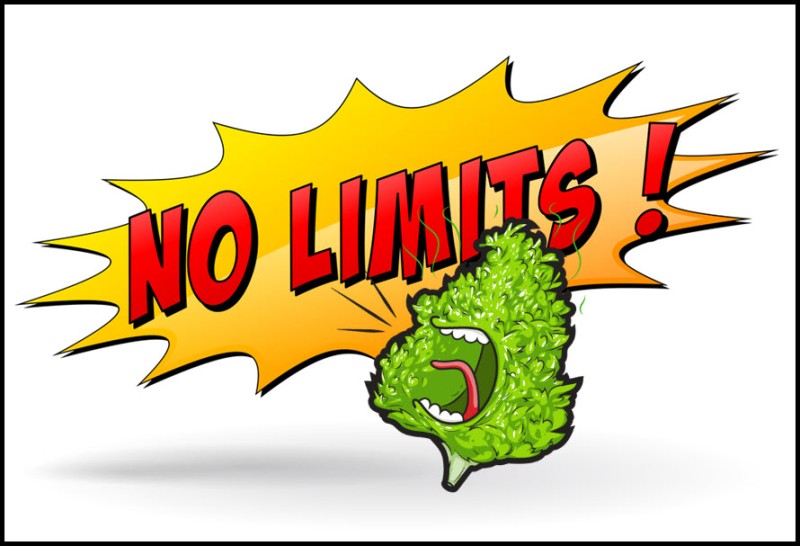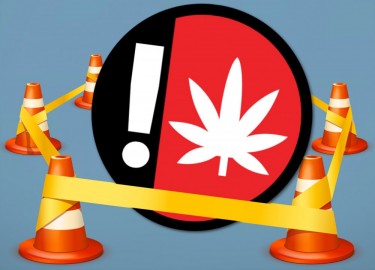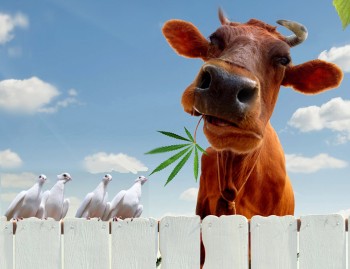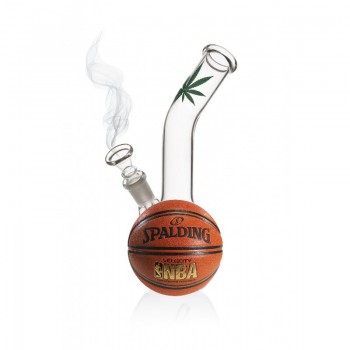
The Hidden Problem Nobody Seems to Talk About when Limiting THC Potency
Some lawmakers argue that by limiting cannabis potency on recreationally available products will protect “the children”. However, the best way to protect children isn’t to restrict the liberties of the individual but to make the legal option be more appealing to any other option.
Today we’re going to be analyzing an article by Christina Caron who is a reporter for the New York Times and wrote an article entitled, “Psychosis, Addiction, Chronic Vomiting: As Weed Becomes More Potent, Teens Are Getting Sick”.
Throughout this article, I’ll be referencing THIS ARTICLE and simply use “NYT, Christina Caron” as the tag to reference to this link. I do this to not repeatedly link to the same article as I quote certain parts from it.
We’ll take a look at her arguments, solutions, and the “impact” high potency weed has and what can be done to deter the youth from consuming it.
The Emotional Hook
The article immediately provides you with an “avatar” – a vehicle for your consciousness to latch onto in order to increase emotional resonance with the article. In this case, “Elysse the fourteen-year-old”
“Elysse was 14 when she first started vaping cannabis.
It didn’t smell, which made it easy to hide from her parents. And it was convenient — just press a button and inhale. After the second or third try, she was hooked.
“It was insane. Insane euphoria,” said Elysse, now 18, whose last name is being withheld to protect her privacy. “Everything was moving slowly. I got super hungry. Everything was hilarious.”
But the euphoria eventually morphed into something more disturbing. Sometimes the marijuana would make Elysse feel more anxious, or sad. Another time she passed out in the shower, only to wake up half an hour later.” – NYT, Christina Caron
While this introduction immediately puts you in a state of mind on “how terrible weed must be for you!” Except, what it fails to reiterate is that “Elysse” was 14-years-old when she started, meaning she procured her weed illegally.
Therefore, irrespective of whether you limit any THC presence in products, there is virtually nothing you can do about stopping a teen from consuming high level of weed through regulation – simply due to the fact that they don’t procure it through legal channels.
More importantly, if you were to limit the THC content in products in the legal market, you immediately create a pocket of opportunity for the black market which undermines the legalization effort.
This very fact is reiterated in the opening of the article;
This was not your average weed. The oil and waxes she bought from dealers were typically about 90 percent THC, the psychoactive component in marijuana.
Nonetheless, Elysse consumed weed and a year later was caught by her parents.
“We got her in a program to help her with it. We tried tough love, we tried everything, to be honest with you,” Elysse’s father said of her addiction.
It’s very difficult to get a teen to “not” do something that makes them feel awesome. When you’re first experience with weed is 90% purified THC, well – there’s a whole lot of euphoria associated with the act of consuming.
However, addiction is rarely about the euphoria and usually about something far deeper. There’s usually a deep need that the addict is trying to cover and unless you deal with that aspect of purpose and meaning, the option to consume cannabis and “feel something” is far simpler. Therefore, I can empathize with her father who most probably didn’t smoke weed themselves when they were younger.
This is often the problem with teen interventions. As we grow older, we tend to forget the way we thought when we were younger – most probably due to the immaturity of the brain up until the age of 25.
Eventually, Elysse – via excessive consumption of highly potent wax, developed a rare condition called Cannabis Hyperemesis Syndrome. In essence, this condition occurs when the endocannabinoid receptors get flooded with cannabinoids due to excessive consumption. It’s a rare condition, but has been associated with consuming high potency wax and edibles for a long period of time.
As you might infer, teenagers aren’t the best at moderating their consumption and when your tolerance picks up, you might think you can smoke more than your body can handle.
The article continues;
In addition to uncontrollable vomiting and addiction, adolescents who frequently use high doses of cannabis may also experience psychosis that could possibly lead to a lifelong psychiatric disorder, an increased likelihood of developing depression and suicidal ideation, changes in brain anatomy and connectivity and poor memory.
Once again, this happens in the minority of the cases but has to be mentioned. Back, before the prevalence of wax and other forms of extracts – these side effects were virtually non-existent. Of course, there were many “studies” written about it, but those studies for the most part were funded by anti-cannabis organizations with a stake in prohibition. In many cases the results were not replicable and in some cases – the data was fabricated.
However, as we progressed throughout the 2000s, we did begin to see “psychosis” become a more prevalent term.
Yet here we find ourselves in a dilemma…does the psychosis come from the plant or the patient? Is it that someone with a tendency towards mental health issues have a higher desire to self-medicate using cannabis, or is it that the cannabis causes the psychosis?
The answer to that question has still not been answered scientifically. Every model used in every recent study has not been able to establish a direct link between them so it’s ingenious to say that cannabis, and even highly potent forms of cannabis “causes psychosis”.
Yet this fact should not lower our guard to the possibility – especially when we’re talking about high-potency weed products containing up to 90%+ refined THC in it.
Here’s the dogmatic conclusion of the first section of the article;
But despite these dangers, the potency of the products currently on the market is largely unregulated.
Yes, in most parts there aren’t a cap on THC. However, let’s not forget that Elysse did not buy her cannabis from the “market” but from a “dealer” as mentioned in the very article. If cannabis was only available in a legal establishment – Elysse would not have been able to purchase it so regularly and would have had to use proxies to buy her products – a recent study found dispensaries to be 100% compliant in enforcing age restrictions.
Therefore the mention of the “market is largely unregulated” has no validity in the example. It’s the fact that the black market still exists due to excessive regulation that made it more available for Elysse to buy her cannabis products.
Using Bad Data to Draw even Worst Conclusions
It’s important to point out the errors in journalism because the Times article will make you ‘believe certain truths’ by pointing out bad data and then drawing a conclusion on an important matter. For example;
In 1995, the average concentration of THC in cannabis samples seized by the Drug Enforcement Administration was about 4 percent. By 2017, it was 17 percent. And now cannabis manufacturers are extracting THC to make oils; edibles; wax; sugar-size crystals; and glass-like products called shatter that advertise high THC levels in some cases exceeding 95 percent.
Yes, according to the DEA they only seized cannabis with about 4% of THC in it…this is a fact, however – the DEA also has a terrible track record of actually testing their crops. In fact, the vast majority of the data supplied by the DEA should be taken with a grain of salt.
This is because the DEA has been actively working on keeping cannabis illegal and in 1995, were in their prime of reefer madness. They often produced erroneous data, shoddy tests, and inflated their findings in order to remain relevant in their “fight against the scourge of drugs”.
They often blocked medical research and only as of a few years ago, opened up the possibility of allowing scientists to study cannabis obtained from dispensaries. Up until a few years ago, all test cannabis came from Mississippi which many researchers equated to “studying hemp”.
What I’m trying to say here is that there was cannabis with higher THC content in the 1990s. In fact, it’s why strains like Acapulco Gold, Verde Limon, Purple Haze, etc became popular. Not to mention, hash and edibles also had higher THC content and people were using that frequently during those years. Not to mention that people like Rick Simpson were making extracts back in the 1990s to help heal people with cancer. The average RSO batch could contain THC from anywhere between 60% - 80%, meaning that high percentage THC products were available in the 1990s.
Nowadays you do get products containing up to 95% THC, yet for any adult consumer – this would not be a problem. I have consumed products of this potency and nothing happened to me or the people consuming with me. Yet unlike a 14 year-old, I understand moderation and would equate to using wax in the same vein as drinking a shot of tequila…it’s fun in small doses, but watch out – take a bit too much and you might find yourself in a tough situation.
I must applaud Christina for adding in the following part in her article;
“In general, we do not support arbitrary limits on potency as long as products are properly tested and labeled,” Bethany Moore, a spokeswoman for the National Cannabis Industry Association, said in a statement. She added that the best way to keep marijuana away from teens is to implement laws that allow the cannabis industry to replace illegal markets, which do not adhere to age restrictions, state-mandated testing or labeling guidelines.
It’s true, that placing caps on THC does little to deter the youth from consuming the products. Instead, policy should be geared to attempt to replace the black market – which is the source of where the youth obtain their products.
The Story of Johnny
The article continues to utilize avatars to convince you that there is a real danger in high potency cannabis. And while I’m not arguing that there is “no danger” – by focusing ones awareness on these outlier cases, does not indicate what happens en masse.
Under the section entitled, “It’s only weed”, the article speaks about a kid called Johnny who started smoking weed at the age of 14. Allegedly, the mother said, “well it’s just weed, I did it in high school and I’m fine…”
And as you can infer, the same didn’t happen for poor Johnny.
Initially, her son did not have any mental health problems and excelled in school. But he eventually started using high potency marijuana products multiple times a day, and this, Ms. Stack said, “made him completely delusional.”
There’s a difference between consuming marijuana and abusing it. Johnny obviously fell into the latter category.
By the time he reached college, he had been through various addiction treatment programs. He had become so paranoid that he thought the mob was after him and his college was a base for the F.B.I., Ms. Stack said. At one point, after he moved out of his childhood home, he threatened to kill the family dog unless his parents gave him money. His mother later discovered that Johnny had obtained his own medical marijuana card when he turned 18 and had begun dealing to younger kids.
This indicates severe mental health issues and cannot be blamed on cannabis alone. Once again, we have a case of a person who probably had an undiagnosed mental health condition that began self-medicating with cannabis. Perhaps, the cannabis brought to light the mental health issue quicker, or perhaps the mental health issue could have remained dormant if Johnny had not abused high potency weed…yet, the fact of the matter is that he definitely had some degree of psychotic behavior especially by threatening to kill the family dog in exchange for money.
This is not the mind of a healthy individual under the influence of cannabis – and it’s important to make that distinction.
After several stays at mental hospitals, the doctors determined that Johnny had a severe case of THC abuse, Ms. Stack said. He was prescribed an anti-psychotic medication, which helped — but then he stopped taking it. In 2019, Johnny died after jumping from a six-story building. He was 19. A few days before his death, Ms. Stack said, Johnny had apologized to her, saying that weed had ruined his mind and his life, adding, “I’m sorry, and I love you.”
This is the sad conclusion. The “culprit” is always something external. This is what most people do. “My child died because of X, Y or Z.” Yet, as we established earlier – Johnny was a troubled teen prior to consuming cannabis. His mental health issues were not helped by cannabis, but we cannot also “blame” cannabis for this result yet also not ignore its part in the conclusion of Johnny’s life.
No Safe Limit
The conclusion of the article indicates that there are “no safe limit” of cannabis use since it hasn’t been established yet.
The fact of the matter is, that unless a teen has an underlying medical condition – they shouldn’t be taking cannabis or any other type of drug for that matter…this includes the slew of ADHD medications being pushed down the throats of our youth as well as cannabis.
This might seem hypocritical on my part since like Johnny and Elysse, I too started smoking cannabis at the age of 14. I also quit for a few years when I was in my early 20s, and then picked it up again in my mid 20s.
I mention my use because as the author of the article provided examples of “bad results from cannabis”, I have had a pretty solid life with no hindrances of mental health issues whatsoever. For me, cannabis didn’t act as a hurdle or made things more difficult, I didn’t get paranoid (except for being busted) and I didn’t spiral into depression.
During a time when my father died, when we were so poor we only ate one meal a day – smoking cannabis didn’t lead to suicidal thinking.
Yet even using my example, you cannot paint with broad brushes about the effects of cannabis and by trying to put the blame on high potency THC, you are missing the point.
Why would a teen want to smoke weed in the first place? In my case, my older brother introduced me to it. I moved to a new country, I was learning a new language and while I had friends, I was out of place.
Cannabis, gave me a sense of community, something to look forward to, and a means to enjoy my weekends with my friends – doing crazy stuff like camping, and playing paintball.
If you would have removed cannabis and made me do the things we did while we were on cannabis, I’d probably have the same level of enjoyment from the activities I did.
And this is the underlying problem – identity. Most teens are not sure who they are. Hell, most people my age still don’t know.
With a lack of purpose, a lack of identity, and a lack of community – it’s easy to abuse cannabis and use it as a means of escape.
If you want to stop teens from taking cannabis, placing caps on THC or trying to scare them away won’t work. You need to have a new approach to deal with kids, where you focus on their purpose, their sense of community and provide opportunities for them to experiment and do things to help uncover their identity.
Cannabis abuse is merely a symptom of a greater internal deficit – and perhaps it’s time we begin focusing on instilling a deeper sense of awareness in our kids. Practices like Mindfulness, Breathwork, and Yoga, would go a long way to help deter people from using drugs.
This is because these activities help stimulate endocannabinoid production. Breathwork can get you “high” but the high is very different, far more reflective than external drugs.
The point is – we need to change the way we educate our kids, give them meaning and purpose – otherwise, even if you were able to completely eradicate cannabis or high potency cannabis – they will just do other drugs. By age 16, I was already consuming LSD, MDMA, etc…obviously not one drug was purchased legally.
I wonder if all drugs were legal and readily available for adults in legal establishments, whether finding drugs would have been more difficult for me.
Nonetheless, as someone who actually has experience with using cannabis for more than 20 years, and in multiple formats my advice to kids are;
-
Don’t do any type of drug until you’re about 25. Allow your brain to develop, experiment and find out who you are
-
If you are already smoking weed or hitting the vape pen and see no way of “not smoking” – try to consume flower with a more robust cannanoids profile. You don’t need “high potency THC” to get zonked…however, when you’re abusing wax – you could also be consuming trace elements of metals and other chemicals that could be playing a role…without proper research…we can only guess.
If you’re a parent and catch your kid smoking high potency cannabis – you need to be able to dialogue with your children. Sending them to camps or programs hardly work. Alcoholic Anonymous has a 70% relapse rate indicating that while there is “some benefit”, it’s not the most effective method of dealing with addiction.
However, give someone purpose and a means to focus their energy – no amount of drugs will ultimately knock you off that road. You just need something to truly believe in, something greater than self.
Perhaps that’s the underlying issue we need to address in the world – what are we doing to help people connect to a purpose that is bigger than them? Right now societal goals is about “making bank and looking fine.” Maybe we need to address our social values.
MORE ON CAPPING THC LIMITS, READ THESE...
WHY CAPPING THC POTENCY IS REGULATORY MADNESS!








